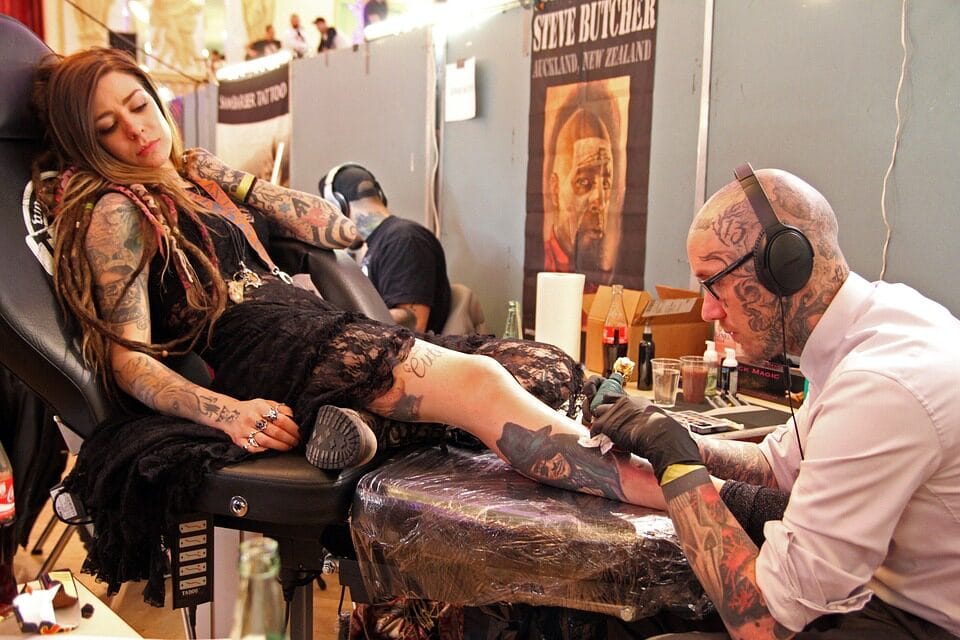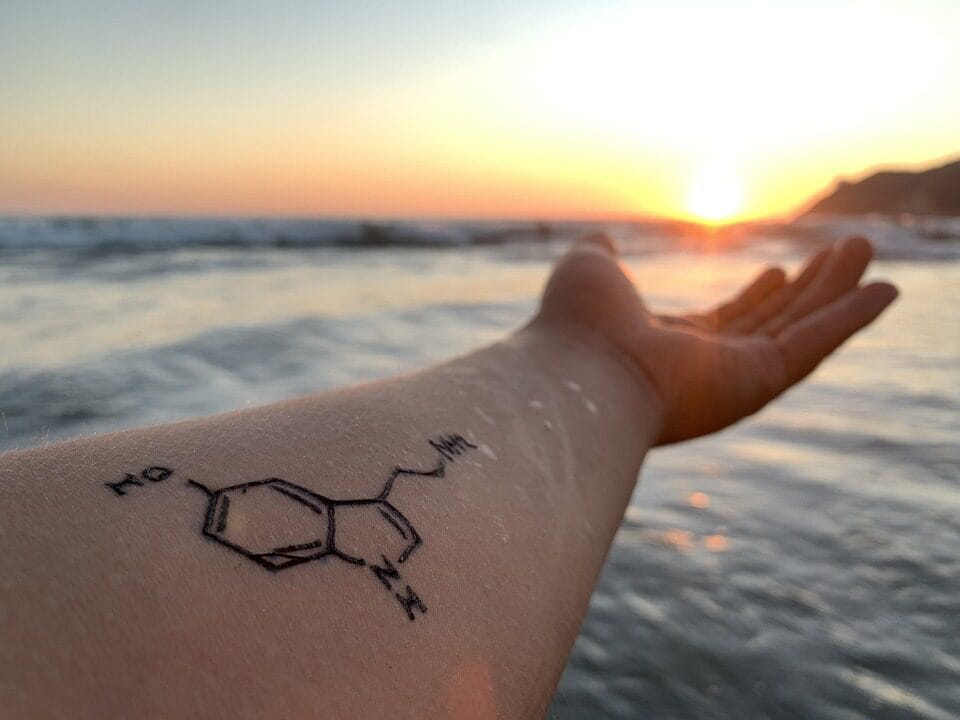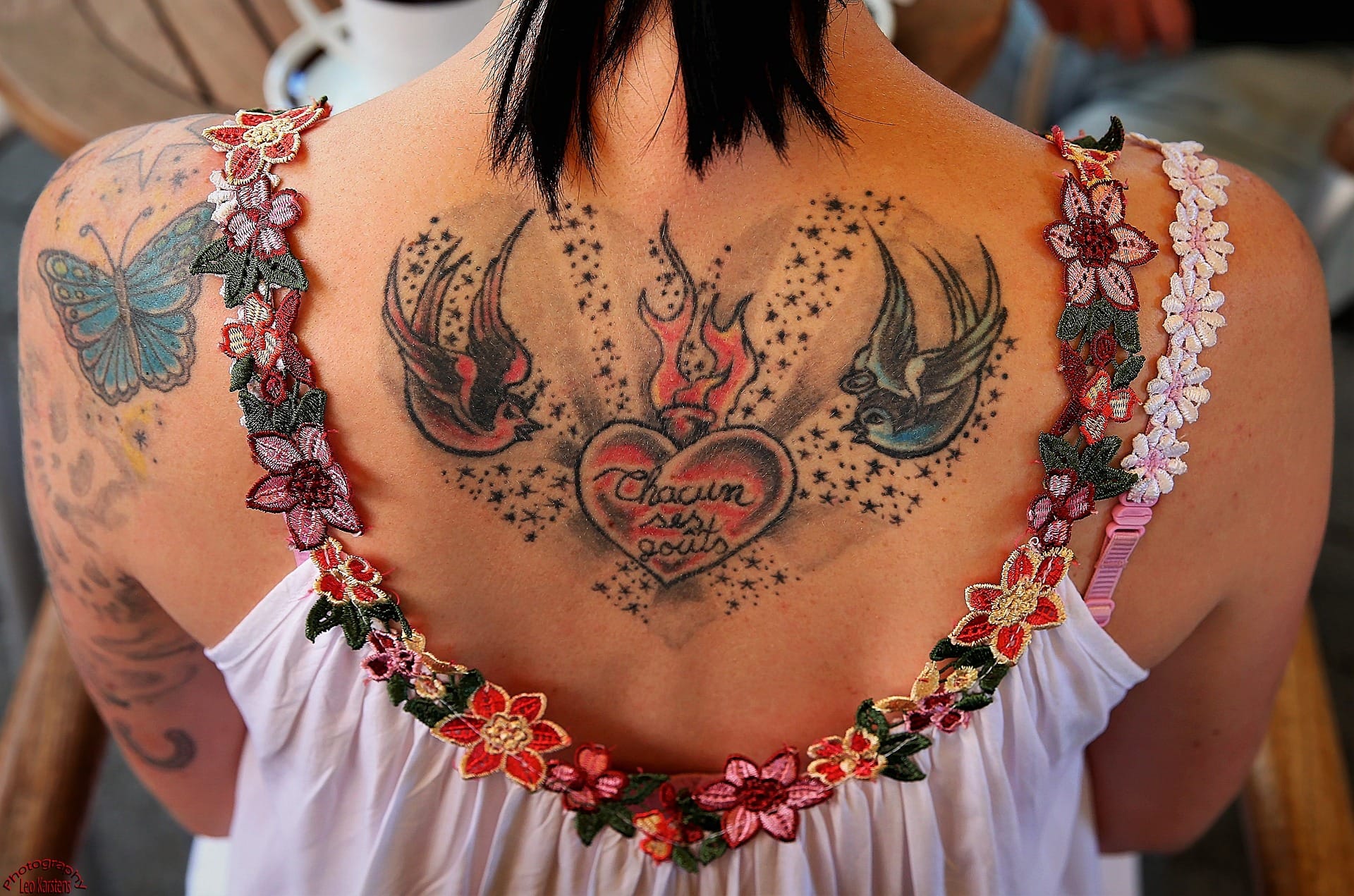The fear is widespread that the process of applying a tattoo and the dyes used in this case are extremely harmful to health, since they significantly increase the likelihood of sick skin cancer. We decided to check if this fear is justified from a scientific point of view.
On a greater risk of developing skin cancer in tattooed people regularly write Mediaincluding Federaland warn in their interview Doctors. About the dangers of dyes used by tattoo masters, Report And entertainment sites, and Portals About health. Often in such publications Reference For a certain study of 2013, the authors of which also stated: “During the application of a tattoo or creating a puncture (piercing), viruses such as HIV, hepatitis B and C and various types of skin cancer, placinoma, carcinoma and melanoma can transmit through the blood. On blogs Tattoo Salonov And publicdedicated to tattoos, the connection of tattoos and cancer is called mythical or unproven.
Tattoos have been known to humanity for many thousands of years. The most ancient of the detected sets for their application (hammer, a mortar and pestle for the manufacture of pigment, the pigment itself and an analogue of a spatula for yielding paint) was found on the Polynesian island of the tons dates VII century BC. e. However, tattoos themselves appeared much earlier. For example, they There is On the body of the “ice man” Etzi - mummies about 5300 years discovered in the Alps. Infrared shooting showed The presence of tattoos on the mummies of the Egyptians who lived more than 5100 years ago.
The very word "tattoo" in European languages appeared Thanks to James Cook. In his expedition to Tahiti, he watched the local custom of applying a permanent pattern on the skin, which the natives called “Tatau”-presumably, this is the onomatopoeic of the sound of a hammer “tat-tat” and a scream of “ay” pain. For several decades the word "tattoo" Designated exclusively Thaitansk practice, but in the middle of the XIX century It took root as a designation of any permanent pattern on the body.
For pigments in ancient tattoos used Zola, soot, ocher, stone coal, cinnabar, resin and even grinded caterpillars. Putings could be applied to refer to the position of a person in the hierarchy, protection from evil forces, demonstration of family status or religious beliefs, as well as as a jewelry and even for punishment. Presumably, the drawings for the body of Etzi were Apply For therapeutic purpose - the study of the remains shows that during his lifetime a man suffered from degenerative changes in the spine and joints, and the places of his tattoos correspond to classical acupuncture points to facilitate the pain of these areas. Modern tattoos are usually do With other goals-69% of Americans who have drawings on the body explained their appearance by the desire to honor something or remind you of someone or something, 47% wanted to inform others about their beliefs, 32% hoped to embellish their appearance thanks to the tattoo. In addition, tattoos can be used in criminal communities to refer to the hierarchy, as well as rehabilitation For overlapping scars, burns and scars on the skin.
The modern process of applying a tattoo is the introduction of a coloring pigment using a needle into the upper layers of the dermis. Drawing Maybe Apply exclusively using a needle or using a special machine. Tattoo pigments are both industrial production (they are used by professional craftsmen) and made from improvised components (For example, ink from a gel pen or burned rubber - a popular pigment in places of imprisonment in the post -Soviet space).
In 2012, scientists from the University of Helsinki Analyzed American reports on the emergence of neoplasms in the place of tattoos. Over 40 years, only 50 such episodes have been described: 23 cases of plane -cell skin cancer and benign (but potentially dangerous) keratoantomas, 16 cases of melanoma and 11 cases of basal cell cancer. In addition to the very fact of the presence of a tattoo, researchers were interested in the age of the patients at the time of its application, how much time passed since then, the dyes of which colors were used in the figure, as well as how intensively the owner of the tattoo subjected this place to ultraviolet rays. Scientists note that in the United States about 80 million people have tattoos, and of them over 40 years, only 16 people fell ill with a melanoma localized in the place of the pattern. It turns out that the incidence of this type of cancer at the site of the tattoo is less than 1 by 200 million (for comparison, by forecast In 2024, the US oncology society will diagnose more than 100,000 new cases of this oncological disease in the United States). That is, the risk of melanoma is precisely on the site of the tattoo is no different from the risk that it will appear on any other area of the skin. The situation on flat -cell and basal cell cancer is similar. The cultural aspect of choosing a place for tattooing is also important - usually these are parts of the body that can be demonstrated by others (arms, legs, back). The same areas of the skin are more exposed to ultraviolet radiation, whose carcinogenicity is no longer in doubt. Considering that in the world, millions of people with tattoos, the chances of neoplasms among them do not differ from the average - scientists literally call this amount “background noise”. Thus, no causal relationship between the presence of a tattoo and an increased risk of malignant skin tumors could not be found.
Suzanne Kilmer, doctor of medicine and press secretary of the American Academy of Dermatology, Agree With the conclusions of scientists: “I would not say that the presence of a tattoo makes you predisposed to skin cancer. Many people have tattoos, and many people get sick skin cancer, so what is (the occurrence of cancer at the site of the pattern - approx. Ed.) Could happen. But does one thing calls? Most likely not. ” A similar point of view adheres to And Ryan Sullivan, Doctor of Medicine, an oncologist from the general profile Massachusetts Hospital in Boston: “The number of people who apply tattoos and the number of identified cancer diseases increases, therefore the number of cancer changes inside the pattern is also growing. However, today there is no evidence that tattoos are the reason for the development of skin cancer or other types of cancer. ”

However, experts MarkThe fact that data on pigments used to apply tattoos is not enough. For example, in the United States, these dyes do not pass certification, as they formally relate to cosmetic products, and the management of sanitary supervision of the quality of food and medicines (FDA) only Checks Those compositions that have already received complaints from consumers. Rospotrebnadzor also does not certify Such pigments.
The lack of certification of pigments leads to the fact that some manufacturers neglect the correspondence between the real composition and what is indicated on the packaging. In 2016, the Australian Ministry of Health investigated The compositions of 49 colors for tattoos, freely sold on ebay, and found that in every fifth sample (and 83% of all black ink), there were chemicals that were not declared in the composition of polycyclic aromatic substances, many of which have a dose -dependent carcinogenic effect. However, the influence of these hydrocarbons is a person subjected And in the other ways - for example, their concentration in smoked meat and fish, glorified urban air and cigarette smoke is high. Scientists did not find out how much PAU from the pigment is spreading through the body and how it affects it, so it is impossible to talk about the proven carcinogenic effect of these colors. Significant concentrations of barium, copper, mercury, zinc, selenium and strontium were also found in the dyes.
However, this is not a reason for panic - in 2017, Danish scientists Spent Experiment on 48 mice.
- 11 rodents made a black tattoo on their backs with dyes prohibited due to the high content of PAU and other potentially carcinogenic substances;
- 10 mice received a red tattoo also forbidden pigment;
- 22 animals not only applied a black pattern with potentially carcinogenic dyes, but also regularly subjected the drawing to ultraviolet radiation;
- Five more mice remained in the control group.
Throughout the year, the mice lived in the laboratory under ordinary conditions, only the third group was constantly exposed to UV rays. Then all the animals were killed and autopsy was performed. Not a single sample of tissues from all organs contained any signs of cancer or precancerous condition. Scientists explain this by the fact that a tattoo is a one -time impact of potential, but dose -dependent carcinogens. That is, from a single effect at the time of administration of the pigment under the skin, an oncological disease will not develop, but the constant consumption of PAU, for example, together with smoked meat, may well lead to malignant changes in the gastrointestinal tract.
The only thing Calls The fear of experts is the fact that a tattoo can be applied over a mole (of course, a dense pattern can be located inside it, but around natural pigmentation). This makes it difficult to carefully monitor the state of the mole and notice the first signs of the rebirth of benign education into malignant (usually its size, the clearness of the edge, symmetry disappears or the color changes). So you can skip the first stage of malignancy and encounter subsequently with a more severe stage of oncological disease.
At the same time, the procedure for applying a tattoo is difficult Name completely safe. Firstly, one cannot exclude the likelihood of individual sensitivity to the components of the pigment-an allergic rash can form around the pattern, edema and redness occur. The most common allergic reaction Calls Red pigment-before, this could be explained by the mercury compounds contained in it, but now they are almost not used in tattoos paints, and drawings with red are still caused by the largest number of allergic reactions. Yellow dye that contains cadmium sulfide can also call increased photosensitization. Due to the application of the green pigment, which includes the salt of potassium dichromate, on the skin of people sensitive to chrome, an eccentase reaction may appear, and the blue pigment based on cobalt aluminum can lead to localized hypersensitivity reactions and, in rare cases, to uveitis-inflammation inside the eye. Allergies are also dangerous can Present needles consisting of an alloy with inclusions of nickel and chromium.
Secondly, after the introduction of the pigment into the dermis, scars can form on the skin, this indicates either an individual reaction or the unprofessionalism of the master. Needles for tattoos violate the integrity of the skin, the remaining wounds can serve as the entrance gate for a variety of infections and cause sepsis. Described Even a mortal case - a man with chronic liver disease made a tattoo on his leg and five days later went on vacation on the coast of the Gulf of Mexico. A gram -negative bacterium Vibrio vulnificus has entered the body through microtrauma of the skin from water. Despite the most aggressive antibiotic therapy, the patient developed septic shock and death occurred. The tattoo site can also infect Golden staphylococcus, various streptococci, mycobacteria, human papilloma virus or MolluscipoxVirus DNA-Poxvirus, which causes an infection called “contagious mollusk”. But the risk of getting hepatitis B or C, as well as HIV due to tattoos, contrary to popular delusions, is extremely small. All described cases of infection with viral hepatitis took place Exclusively in underground tattoo sites or prisons, and cases of HIV infection due to tattoos made by qualified specialists who comply with the rules of aseptics and antiseptics in the scientific literature and at all Not described.
Thirdly, the lower back tattoos in women are made difficult or completely impossible (in case of complete coating of the skin at the site of potential injection) epidural anesthesia, which is used for pain relief in childbirth. Previously carried out Experiments The rabbits showed that with such an injection through tattooed skin, dye microparticles can penetrate into the brain membranes.
Moreover, tattoos can used As part of rehabilitation in cancer patients. For example, the procedure for applying a pattern that simulates an areola and nipple is popular in women after the reconstruction of the mammary gland and the nipple performed during the treatment of breast cancer, or after preventive mastectomy. Such a tattoo Performs Not only aesthetic, but also therapeutic function: polls “demonstrate that the vast majority of women who have made the tattoo areola after the reconstruction of the chest increased satisfaction with life, and their body picture improves.” In addition, oncological patients, doctors can also allow the tattoo or eyebrow tattoo or eyelid tattoo to chemotherapy or after Her.

Thus, there is no convincing evidence that tattoos made by a professional master in a specialized salon and in compliance with the rules of aseptic and antiseptics increase the risk of developing skin cancer or other oncological diseases. Moreover, the introduction of a coloring pigment under the skin can be used as aesthetic and therapeutic practice in the treatment of cancer. At the same time, tattoos can really complicate the early detection of precancerous changes in the skin. It is not recommended to apply tattoos on top of moles, since trauma of these formations can also lead to adverse consequences.
Image on the cover: by Leo Karstens from Pixabay
If you find a spelling or grammatical error, please inform us of this, highlighting the text with an error and by pressing Ctrl+Enter.






